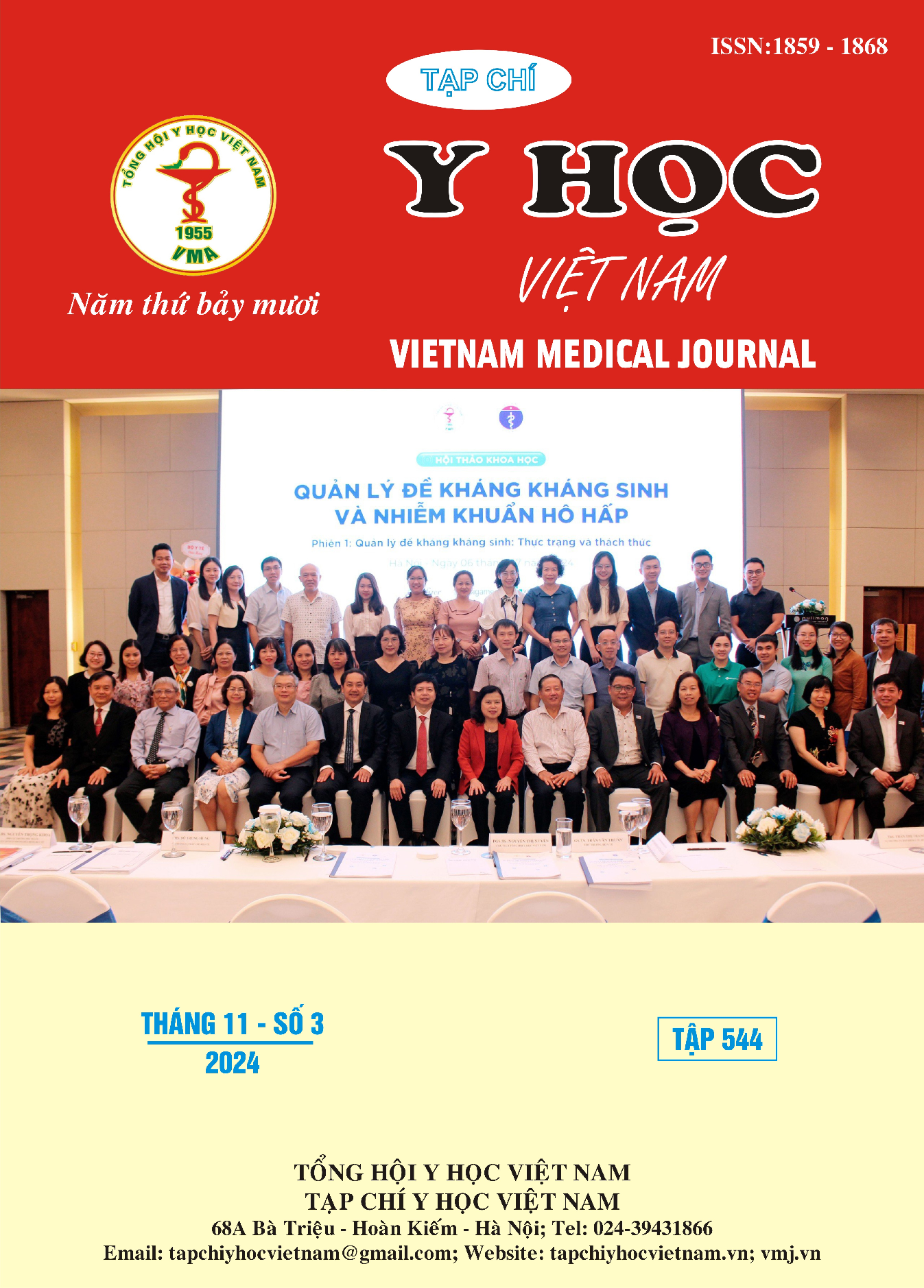TREATMENT OUTCOMES OF CLOSED HUMERAL SHAFT FRACTURES IN ELDERLY USING PLATE AND SCREW FIXATION AT THAI BINH PROVINCIAL GENERAL HOSPITAL
Main Article Content
Abstract
Objective: To evaluate the surgical outcomes of closed humeral shaft fractures in elderly patients treated with plate and screw fixation at Thai Binh Provincial General Hospital. Methodology: A retrospective and prospective cross-sectional study was conducted on 71 elderly patients with humeral shaft fractures who received plate and screw fixation treatment at Thai Binh Provincial General Hospital from January 2020 to March 2024. Results: The study included 71 patients, consisting of 28 males (39.4%) and 43 females (60.6%), with a mean age of 72.5±8.2 years (ranging from 60 to 98). The majority, 54 patients (76.1%), resided in rural areas. The primary causes of injury were domestic accidents (falls) in 43 cases (60.6%), followed by traffic accidents in 26 cases (36.6%). Most of the humeral fractures were classified as type A according to AO classification, with 38 patients (53.5%). Comorbidities were present in 29 patients (40.9%), with 1 to 2 comorbid conditions, while 38% had 3 or more. Surgical methods included locking plate fixation in 35 patients (49.3%), AO plate fixation in 28 patients (39.4%), and compression locking plate fixation in 8 patients (11.3%). Follow-up data were available for 55 patients, with an average follow-up duration of 26.3 ± 12.9 months (ranging from 7 to 53 months). Assessment using the Neer scoring system revealed that 74.5% of patients had very good functional recovery, 18.2% good recovery, 7.3% average recovery, and no patients had poor outcomes. Conclusion: Closed fractures of the humerus shaft in the elderly are commonly due to falls, with a higher prevalence in females. Most patients have accompanying comorbidities. The majority exhibited good to very good surgical outcomes and rehabilitation as assessed by the Neer scoring system. Average and poor outcomes were more frequently observed in elderly patients with multiple comorbidities.
Article Details
Keywords
: humeral shaft fracture; elderly; plate and screw fixation.
References
2. Hur CY, Shon WY, Moon JG, et al (2007). Comparison of LC-DCP versus LCP for internal fixation of humeral shaft fractures in elderly patients. J Korean Frac Soc; 20(3): 246–251.
3. Penugonda Ravi Shankar, Muni Srikanth Iytha, Archana Pusarla, et al (2015). Effectiveness Of Locking Versus Dynamic Compression Plates For Diaphyseal Humerus Fractures. Journal of Evidence Based Medicine and Healthcare, 2(6), 693-698.
4. Trần Việt Hưng (2019). Đánh giá kết quả điều trị gãy kín thân xương cánh tay bằng phương pháp kết hợp xương nẹp vít. Luận văn thạc sĩ trường Đại học Y Dược Huế.
5. Vũ Minh Hải (2019). Kết quả phẫu thuật kết hợp xương nẹp vít điều trị gãy kín thân xương cánh tay. Tạp chí Y học Việt Nam, 476(3): 56-58.
6. Phạm Ngọc Thắng, Nguyễn Bá Ngọc, Trần Văn Phương và cộng sự (2023). Đánh giá kết quả điều trị gãy kín thân xương cánh tay bằng nẹp vít tại Bệnh viện Quân Y, Tạp chí Y Dược học Quân sự, số 2:43-49.
7. Vu H.M., Nguyen L.H., Nguyen H.L.T., et al. (2020). Individual and Environmental Factors Associated with Recurrent Falls in Elderly Patients Hospitalized after Falls. International journal of environmental research and public health, 17(7).
8. Tingart M., Bathis H., Lefering R., et al. (2001). [Constant Score and Neer Score. A comparison of score results and subjective patient satisfaction]. Der Unfallchirurg, 104(11), 1048-54.


